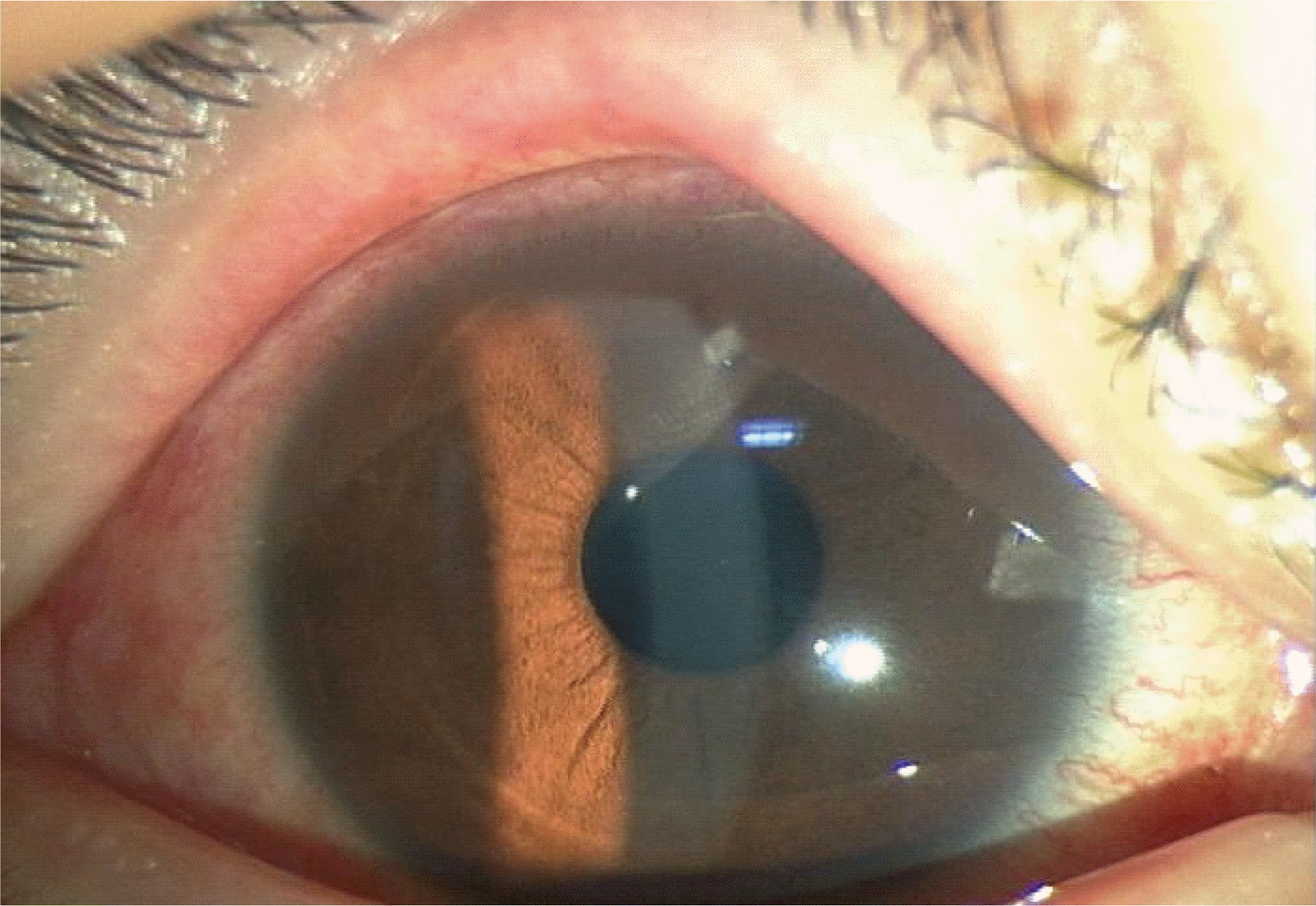Abstract
Purpose
To report 2 cases of corneal melting and corneal melting with descemetocele that occurred in users of cosmetic contact lenses.
Case summary
A-12-year-old and a 13-year-old female who used cosmetic contact lenses were referred to our clinic under the preliminary diagnosis of keratitis and corneal melting. The patients had purchased the lenses from an optician and had worn the lenses for approximately 1 month without being educated on their proper use. The signs and symptoms improved after 2 weeks of treatment with oral steroid and 1% topical prednisolone acetate. However, descemetocele occurred in the 12-year-old patient. Reepithelization of the cornea had been completed within the treatment period. However, corneal thinning with mild opacity remained in the lesions, and the best corrected visual acuities on the Snellen chart were 20/30 in both patients.
References
1. Lee WJ, Yoon GS, Shyn KH. Corneal Complication in Contact Lens Wearer. J Korean Ophthalmol Soc. 1996; 37:225–32.
2. Park YM, Hahn TW, Choi SH, et al. Acanthamoeba Keratitis Related to Cosmetic Contact Lenses. J Korean Ophthalmol Soc. 2007; 48:991–4.
3. Efron N, Morgan PB, Hill EA, et al. The size, location and clinical severity of corneal infiltrative events associated with contact lens wear. Optom Vis Sci. 2005; 82:519–27.

4. Donshik PC, Sucheki JK, Ehlers WH. Peripheral corneal infiltrates associated with contact lens wear. Trans Am Ophthalmol Soc. 1995; 93:49–60.
5. Stein RM, Clinch TE, Cohen FJ, et al. Infected vs sterile corneal infiltrates in contact lens wearers. Am J Ophthalmol. 1988; 105:632–6.

6. Bates AK, Morris RJ, Stapleton F. Sterile corneal infiltrates in contact lens wearers. Eye. 1989; 3:803–10.

7. Sweeney DF, Jalbert I, Covey M, et al. Clinical characterization of corneal infiltrative events observed with soft contact lens wear. Cornea. 2003; 22:435–42.

8. Steinemann TL, Pinninti U, Szczotka LB, et al. Ocular complication associated with the use of cosmetic contact lenses from unlicensed vendors. Eye Contact Lens. 2003; 29:196–200.
Figure 1.
Right eye of case 1 (1st visit). Mild conjunctival hyperemia and corneal epithelial defect (diameter< 1 mm) were observed. Slit-lamp examination revealed mild superficial infiltrations around the epithelial defect.

Figure 2.
Left eye of case 1 (1st visit). Severe conjunctival injection and chemosis were observed. Corneal stromal lysis (indicated by the arrow) with a size of approximately 4 mm was also observed. Diffuse corneal edema was detected (A). A large epithelial defect was observed on the upper cornea, and it was surrounded by the infiltration (B). Corneal edema and conjunctival injection were significantly reduced 3 days after the steroid-based treatment was initiated. Slit-lamp examination revealed the healing of the epithelial defect and a 2-mm-sized descemetocele (C). The epithelium had completely healed 2 weeks after the treatment was initiated; however, corneal opacity had developed on the upper cornea. The best corrected visual acuity was 20/30 (D).

Figure 3.
Right eye of case 2. On the 1st visit, slit-lamp examination revealed severe conjunctival injection, chemosis, and pseudomembrane formation. Corneal stromal lysis (approximately 4 mm) and a large epithelial defect were observed on the lower cornea, and they were surrounded by the infiltration (A, B). Epithelial healing was completed 12 days after the treatment was initiated; however, corneal opacity and thinning had developed on the lower cornea. The best corrected visual acuity was 20/30 (right eye) (C).





 PDF
PDF ePub
ePub Citation
Citation Print
Print


 XML Download
XML Download